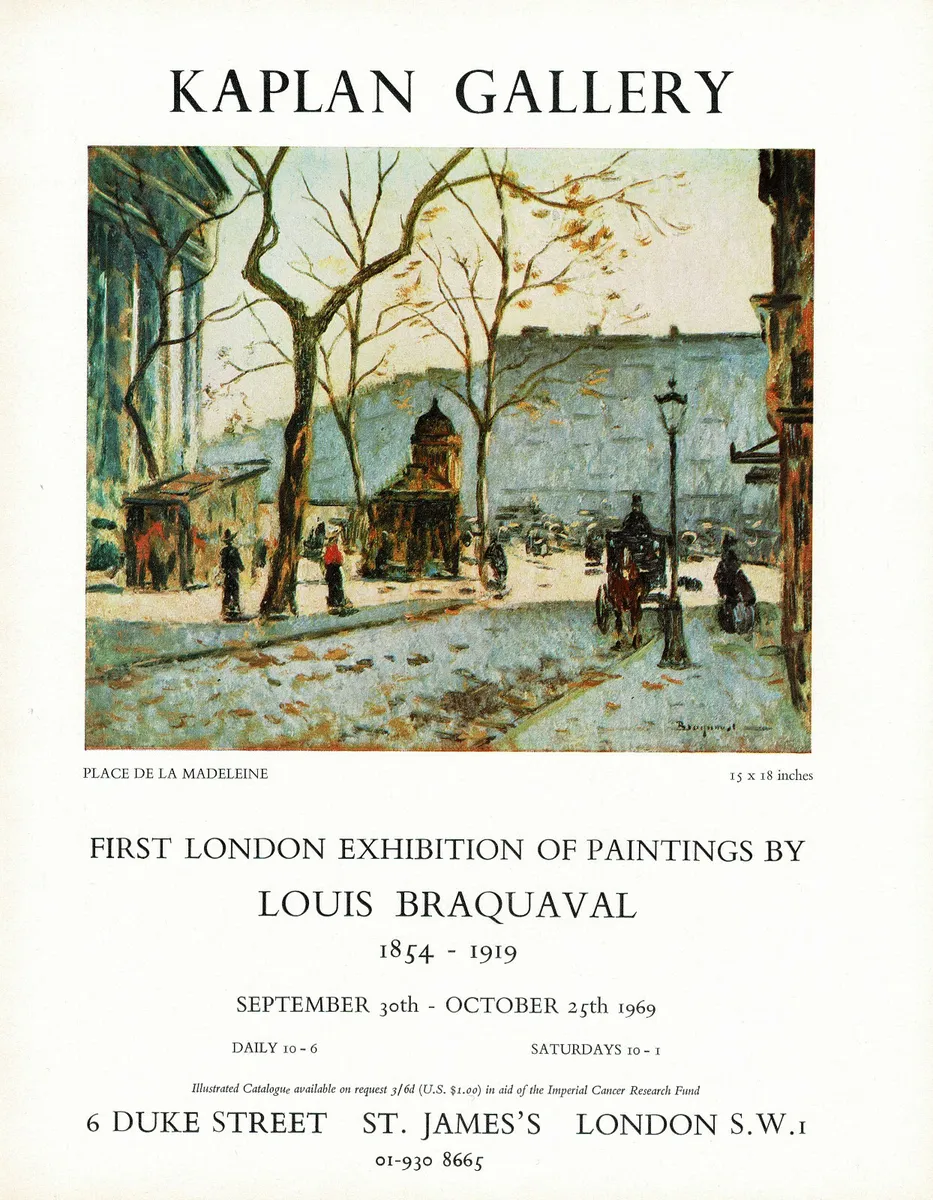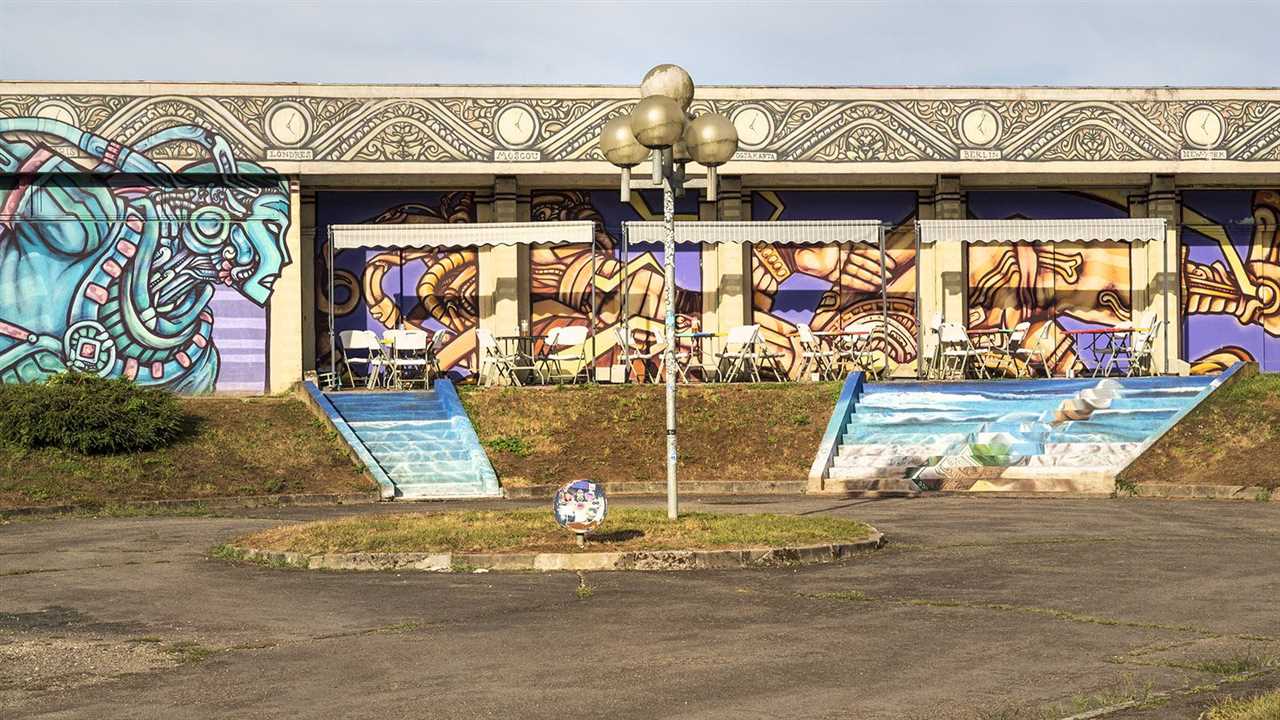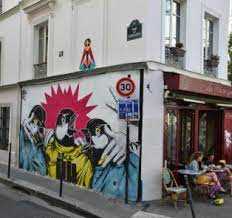
When one thinks of art in Paris, images of classical masterpieces housed in prestigious museums often come to mind. However, hidden within the city’s vibrant streets lies another form of artistic expression that is just as captivating – street murals. Paris has become a haven for urban artists from around the world, attracting both seasoned professionals and aspiring creatives.
These street murals have become an integral part of the city’s cultural landscape, transforming dull walls into thought-provoking canvases. Walking through the streets of neighborhoods like Belleville and Le Marais, one cannot help but be enthralled by the explosion of colors, patterns, and stories that these murals share.
The diverse and multicultural nature of Paris is also reflected in these street artworks. From political statements to social commentaries, each mural tells a unique story that resonates with the experiences of the artist and the community they represent. The walls of Paris have become a medium for artists to voice their opinions, challenge societal norms, and celebrate the rich cultural tapestry that makes up the city.
Exploring the world of street murals in Paris is not just about admiring the art itself, but also about immersing oneself in the urban culture that surrounds it. From bustling street markets and trendy cafes to independent art galleries and quirky boutiques, the neighborhoods adorned with these murals have developed a character of their own, drawing both locals and tourists alike. These areas have become vibrant hubs for creativity, attracting a diverse crowd of art enthusiasts and urban explorers.
Street art has become a powerful symbol of urban culture, transforming cities around the world into open-air galleries. Paris, known for its rich history and artistic legacy, has embraced this form of self-expression, showcasing vibrant murals on the walls of buildings, underpasses, and streets.
Street art has its roots in graffiti, a rebellious form of expression that originated in the 1970s. However, street art has evolved beyond simple vandalism and has gained recognition as a legitimate art form. It provides a platform for artists to share their messages, challenge social norms, and reflect the unique characteristics of their surroundings.
Paris, with its dynamic and diverse urban landscape, has become a haven for street artists from around the world. The city’s streets are adorned with thought-provoking murals that capture the essence of contemporary urban culture. These murals range from large-scale, realistic portraits to abstract, colorful designs, transforming ordinary urban spaces into extraordinary works of art.
Embracing street art is not only a celebration of creativity, but it also plays a significant role in revitalizing neighborhoods and fostering a sense of community. By transforming blank walls into vibrant canvases, street art adds life and color to the urban environment, making the city streets more inviting and inspiring for both residents and visitors.
Moreover, street art serves as a platform for marginalized voices to be heard. Many artists use their murals to address social and political issues, shedding light on topics such as inequality, discrimination, and environmental concerns. Through their art, they encourage dialogue and provoke reflection, making the city an open space for discussions about critical societal matters.
Embracing street art means recognizing the power of public art to transform and inspire. It allows individuals to engage with their surroundings in a unique and meaningful way, encouraging a sense of curiosity and exploration. By embracing street art, Paris continues to celebrate and promote urban culture, showcasing the diverse talents and perspectives of artists from all walks of life.
Paris is not only known for its iconic landmarks and world-class museums, but it is also home to a vibrant and ever-evolving street art scene. The streets of the city are adorned with stunning murals that tell stories, capture emotions, and reflect the diverse urban culture of Paris.
From the narrow streets of the Marais to the bustling neighborhoods of Belleville and Montmartre, Paris’s street mural paradise is waiting to be explored. Artists from around the world have left their mark on the city, creating a visual feast for art enthusiasts and passersby alike.
The Evolution of Street Art
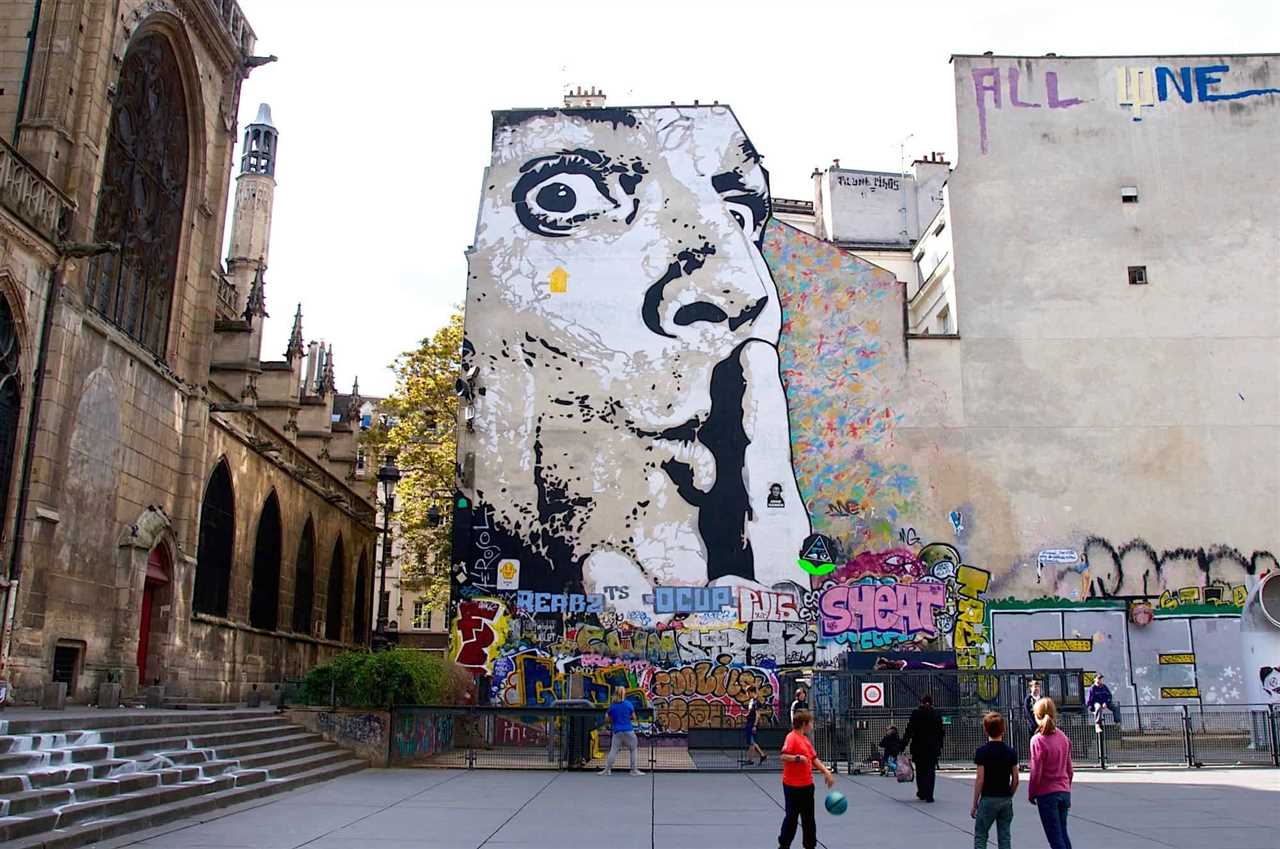
Street art has come a long way from its humble beginnings as graffiti on subway walls. Today, it has evolved into a respected and recognized art form that brings life and color to the city’s buildings and public spaces. Paris has been at the forefront of this evolution, providing a canvas for street artists to express themselves and push boundaries.
What sets Paris’s street murals apart is not just their sheer size and scale, but also the messages they convey. Many of the murals depict social and political issues, addressing topics such as inequality, environmentalism, and human rights. These artworks serve as powerful statements, sparking conversations and inspiring change.
Exploring Neighborhoods
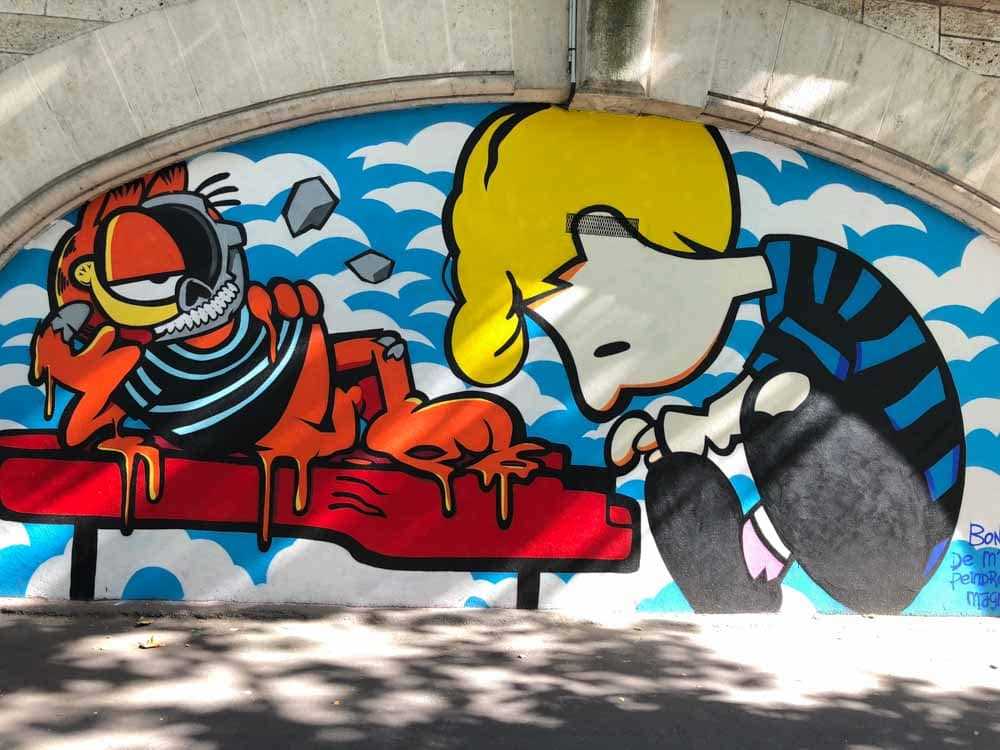
To fully experience Paris’s street mural paradise, it is essential to explore different neighborhoods. The Marais, with its cobbled streets and trendy boutiques, is home to some of the city’s most renowned murals. Artists like Invader and Shepard Fairey have left their mark here, adding a touch of contemporary art to this historic district.
Belleville, located in the east of Paris, is another neighborhood worth exploring. Known for its multicultural atmosphere, Belleville has become a canvas for artists from all backgrounds. The murals here reflect the diversity and energy of the neighborhood, creating a visual tapestry that celebrates different cultures and traditions.
Finally, no exploration of Paris’s street mural paradise would be complete without a visit to Montmartre. This bohemian neighborhood, famous for its artistic heritage, is home to murals that pay homage to the city’s creative spirit. Artists like Levalet and C215 have transformed the streets of Montmartre into an open-air gallery, capturing the essence of Parisian life through their work.
A Free Artistic Journey: Exploring Street Art for Free in Paris
Paris is not only famous for its iconic landmarks and museums, but also for its vibrant street art scene. From colorful murals to thought-provoking graffiti, the city is a canvas for artists from around the world. The best part? You can explore this world of street art for free!
One of the best ways to discover street art in Paris is to take a self-guided walking tour. Armed with a map or a smartphone, you can wander through different neighborhoods, uncovering hidden art gems along the way. Le Marais, Belleville, and Oberkampf are just a few areas known for their vibrant street art culture.
As you walk through the streets of Paris, keep an eye out for large-scale murals and smaller, more discreet pieces tucked away in unexpected places. Street art comes in all shapes and sizes, and part of the joy is stumbling upon a piece that captures your attention and imagination.
Another way to immerse yourself in the street art culture is by attending street art festivals and events. Paris is no stranger to these, with annual events such as the “Street Art 13” festival attracting both local and international artists. These events often feature live painting sessions, exhibitions, and guided tours, offering a unique opportunity to witness the creation of street art firsthand.
Lastly, don’t forget to capture your street art discoveries along the way. Whether you’re an amateur photographer or simply want to share your experiences on social media, documenting the art you encounter is a great way to preserve your memories and support the artists.
| Tips for Exploring Street Art for Free in Paris: |
|---|
| 1. Plan your route in advance using maps or smartphone apps. |
| 2. Keep your eyes open for hidden art in unexpected places. |
| 3. Visit dedicated street art spaces such as the 13th arrondissement or Rue Denoyez. |
| 4. Attend street art festivals and events for live painting sessions and guided tours. |
| 5. Don’t forget to capture and share your favorite pieces! |
So why not embark on a free artistic journey in Paris and discover the world of street art? With its colorful and ever-changing landscape, the city offers a unique and exciting experience for art enthusiasts and curious wanderers alike. Get ready to be inspired!
The Impact of Street Art on the Urban Landscape
Street art has become an integral part of the urban landscape, transforming cities into open-air galleries that attract both locals and tourists. With its vibrant colors and bold imagery, street art brings life and creativity to otherwise dull and monotonous urban environments.
One of the most significant impacts of street art is its ability to challenge social norms and provoke thought. Through their art, street artists often address social and political issues, sparking important conversations within the community. These murals serve as visual statements, allowing artists to express their opinions and engage viewers in a dialogue about topics that might otherwise go unnoticed.
Furthermore, street art has the power to revitalize neglected areas and foster a sense of pride within communities. Murals painted on crumbling walls and abandoned buildings can transform these spaces into landmarks and tourist attractions, breathing new life into forgotten corners of the city. In this way, street art not only beautifies the urban landscape but also helps rejuvenate communities and create a sense of identity.
The Evolution of Street Art
Over the years, street art has evolved from simple graffiti tags to intricate murals that rival the works found in traditional art galleries. This evolution has led to a greater acceptance and appreciation of street art as a legitimate form of artistic expression.
Advancements in technology have also contributed to the evolution of street art. Artists now have access to a wider range of tools and materials, allowing them to create more intricate and detailed works. Additionally, the rise of social media has provided a platform for street artists to showcase their art and gain recognition on a global scale.
The Influence of Street Art on Other Art Forms
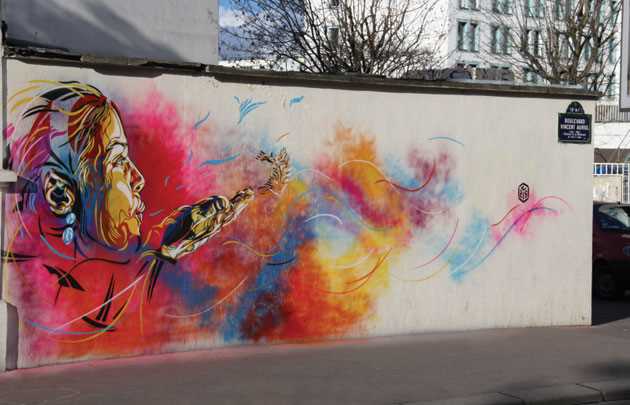
Street art has not only transformed the urban landscape but has also influenced other art forms. Artists from various disciplines, such as photography and fashion, have drawn inspiration from street art, incorporating its vibrant colors and bold designs into their work.
Furthermore, street art has sparked a new wave of creativity and experimentation, encouraging artists to think outside the box and challenge traditional artistic boundaries. This fusion of different art forms has resulted in innovative and exciting collaborations, blurring the lines between street art, graffiti, and other artistic disciplines.
The Evolution of Street Art in Paris

Early Beginnings
The roots of street art in Paris can be traced back to the 1960s and 1970s, when graffiti artists began to leave their mark on the city’s walls. Inspired by the graffiti movement in New York, French artists such as Blek le Rat and Miss Tic started to use stencils and spray paint to create their artworks. Their bold and provocative images quickly gained attention and became an integral part of the urban fabric.
Rise to Prominence
In the 1980s and 1990s, street art in Paris began to gain wider recognition and acceptance. The emergence of hip-hop culture and the rise of the “alternative” art scene provided a platform for street artists to showcase their work. Artists like Invader and Jef Aerosol started to create larger and more intricate murals, often drawing inspiration from pop culture and political activism.
With the increasing popularity of street art, the city of Paris started to embrace and support these artists. Public spaces, such as the Bercy Skatepark and the 13th arrondissement, were designated for legal graffiti where artists could freely express themselves without fear of prosecution. This official recognition helped to legitimize street art as a respected form of artistic expression.
Current Trends
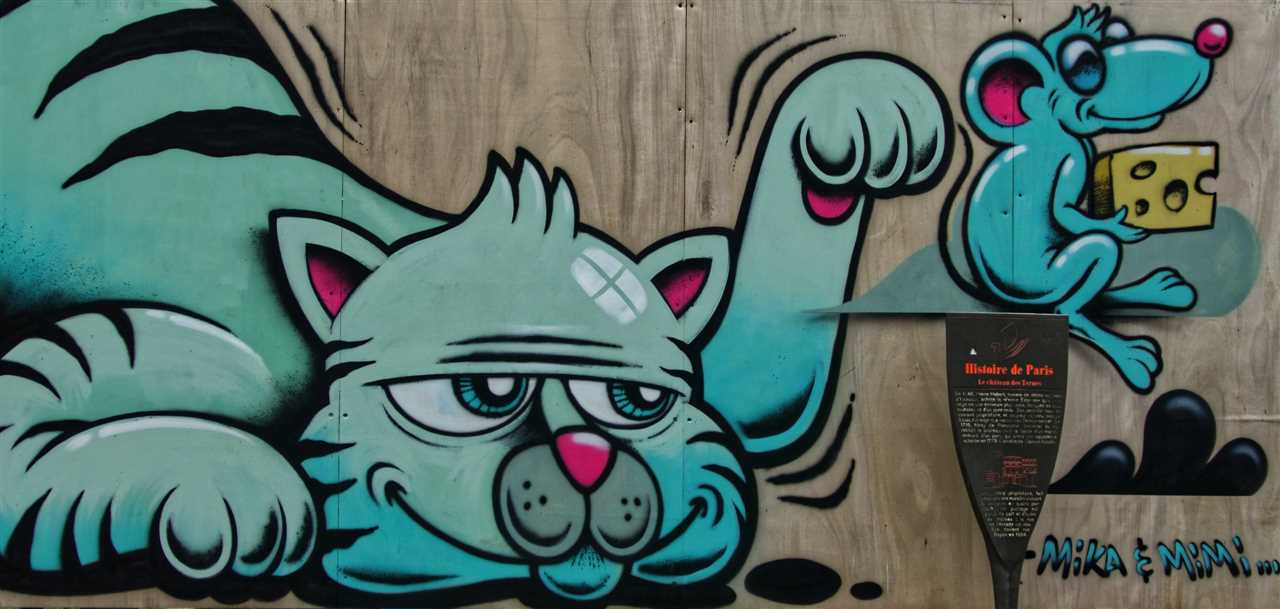
Today, street art in Paris continues to evolve and push boundaries. Artists like C215 and Le CyKlop have taken street art to new heights, experimenting with different techniques and mediums. From vibrant murals to intricate installations, street art in Paris has become an integral part of the city’s cultural landscape.
Street art in Paris is not just limited to walls and buildings. Artists have also started to explore other avenues, such as sculptures, paste-ups, and interactive installations. This multidimensional approach has allowed street art to engage with the public and create unique experiences that go beyond traditional gallery spaces.
Street art in Paris continues to spark conversations and challenge established norms. It has become a platform for artists to express their views on social and political issues, raising awareness and inspiring dialogue among residents and visitors alike. As the city evolves, so does its street art scene, making Paris a hub for creativity and artistic expression.
Paris: A Mecca for Street Art Festivals
Paris, the capital of France, is not only known for its iconic landmarks and rich history, but also for its vibrant street art scene. The city has become a mecca for street art festivals, attracting artists from all around the world.
One of the most renowned street art festivals in Paris is the “Le M.U.R” festival. This annual event takes place in the Oberkampf district and features a curated selection of artists who create large-scale murals on a designated wall. The festival aims to showcase the diversity and creativity of street art and engage the local community in the artistic process.
Another popular street art festival in Paris is the “Tour Paris 13” project. This unique event took place in a 13-story building that was due for demolition. Prior to its destruction, the entire building was transformed into an immersive art exhibition, with over 100 street artists from around the world turning each floor into a canvas. The project attracted international attention and drew thousands of visitors.
Paris has embraced street art as a form of expression and has even designated certain areas as legal graffiti zones, where artists are free to create their works without fear of punishment. This has allowed for the development of a thriving street art community in the city.
Whether you are an art enthusiast or simply curious about the urban culture, Paris offers a rich and diverse street art scene that is worth exploring. From large-scale murals to hidden gems on side streets, the city is a treasure trove of artistic expression.
Street Art Festivals in Paris: Summary
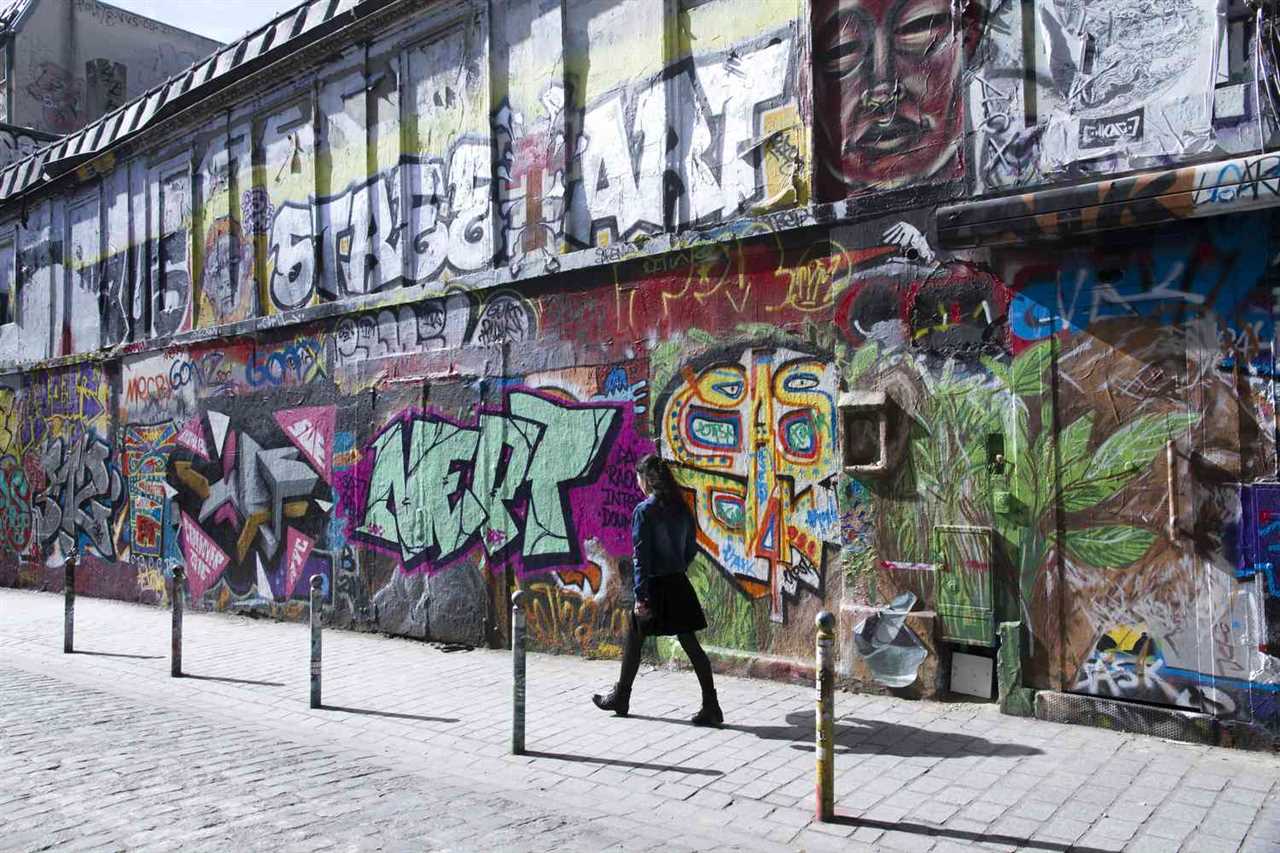
| Festival Name | Location | Description |
|---|---|---|
| Le M.U.R | Oberkampf district | An annual festival featuring large-scale murals created by selected artists. |
| Tour Paris 13 | 13th arrondissement | An immersive art exhibition in a 13-story building, featuring works by over 100 international street artists. |
Preserving and Supporting Street Art in Paris
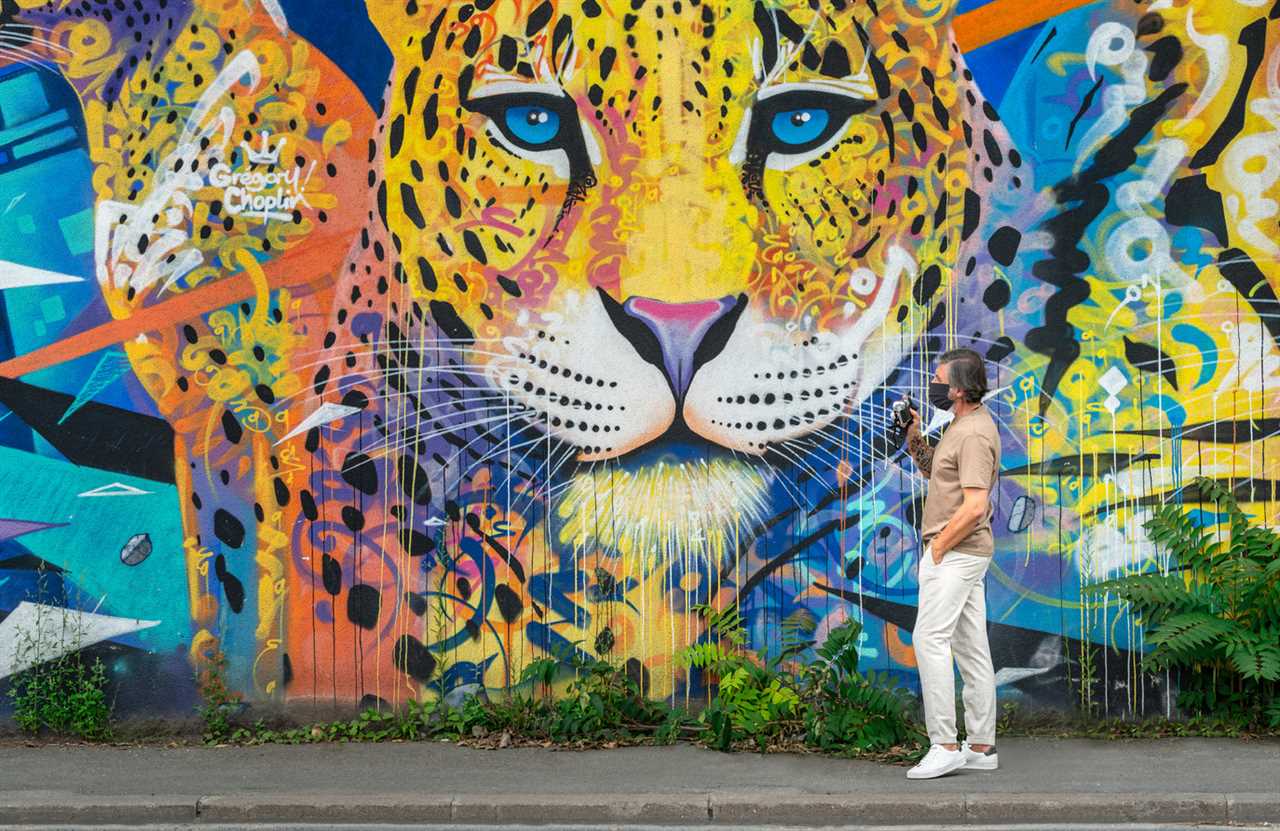
Street art has become an important cultural phenomenon in cities all over the world, and Paris is no exception. The vibrant and diverse street art scene in the French capital has gained international recognition and draws tourists from far and wide. However, with the transient nature of street art, preserving and supporting this art form can be a challenge.
One way that Paris preserves street art is by designating certain areas as legal and authorized for artists to create murals. These designated spaces, such as the famous Rue Denoyez in the Belleville district, provide artists with a canvas to express themselves without the fear of their work being removed or covered up. These designated areas not only encourage the creation of street art, but they also give the public an opportunity to appreciate and enjoy these unique expressions of urban creativity.
In addition to designated areas, the City of Paris has implemented a program called “1 Piece = 1 Tree” to support street art while also promoting sustainability. This program encourages artists to create murals that are linked to the planting of trees in urban areas. Each mural that is created leads to the planting of a tree, helping to beautify the city and combat climate change. This initiative not only supports the street art community but also brings the benefits of green spaces to the urban environment.
Furthermore, Paris is home to numerous street art festivals and events that celebrate and showcase the talent of local and international street artists. These events, such as the Paris Urban Art Fair and the Street Art Festival, not only provide artists with a platform to exhibit their work but also engage the public in the world of street art. Through live painting performances, workshops, and guided tours, these festivals create an immersive experience that fosters a deeper appreciation for street art.
Preserving street art in Paris is not just about protecting the physical artworks, but also about recognizing the cultural and historical significance of this art form. The city recognizes the importance of documenting and archiving street art to ensure its legacy. Various cultural institutions, like galleries and museums, have started to collect and exhibit street art, bridging the gap between the street and the traditional art world. This preservation effort not only safeguards the physical artworks but also provides a platform for future generations to discover and learn from the rich and diverse urban art of Paris.
The preservation and support of street art in Paris are crucial for maintaining the city’s vibrant and dynamic creative scene. By designating spaces, implementing sustainable initiatives, organizing festivals, and recognizing street art’s cultural value, Paris is embracing and celebrating this art form, ensuring that it continues to thrive and inspire for years to come.

I am a mural enthusiast and a fervent admirer of street art. Rather than creating murals myself, I am passionate about collecting them. My love for street art knows no bounds. I am dedicated to curating and cherishing these artworks that grace the streets. My collection stands as a testament to my profound appreciation for this form of artistic expression.
read about me


